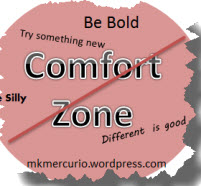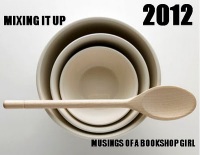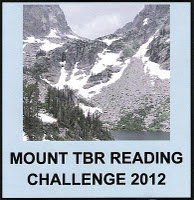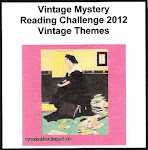(Actually, this was a weekend trip – but who’s counting?)
Last week, we spent a couple of days up in northeastern Pennsylvania: the area that prospered and then declined with anthracite (hard) coal. First, we went to Scranton, and saw the world of steam trains and coal mines and trolleys:
 Scranton plunges down a mountainside, spreads across the valley floor, and climbs the opposite slope. It’s not particularly fancy; this is where the people who did the hard work lived.
Scranton plunges down a mountainside, spreads across the valley floor, and climbs the opposite slope. It’s not particularly fancy; this is where the people who did the hard work lived.
On the other hand, it was one of the first cities to be electrified, and to use trolley cars for public transportation. (The hills were too steep for public horsecars.)
 This is the Electric City Trolley Museum in Scranton, but that’s not a Scranton trolley – Philadelphia used to be full of Philadelphia Transit Company cars painted this distinctive combination of cream and ugly PTC green. (The trolleys are still around, but the PTC is long gone, absorbed by a larger entity.) Scranton was one of the first places to use electric trolleys for transportation, because the hills were too steep for horsecars.
This is the Electric City Trolley Museum in Scranton, but that’s not a Scranton trolley – Philadelphia used to be full of Philadelphia Transit Company cars painted this distinctive combination of cream and ugly PTC green. (The trolleys are still around, but the PTC is long gone, absorbed by a larger entity.) Scranton was one of the first places to use electric trolleys for transportation, because the hills were too steep for horsecars.
 Trolley fans can explore old trolleys, including the controls.
Trolley fans can explore old trolleys, including the controls.
 Inside the trolleys are old advertisements for all sorts of products – that used to be typical of trolleys, buses, and subways, but this particular margarine ad still startled me. What do you think? Does white margarine sound like anything you want to eat? (It makes me think of lard.)
Inside the trolleys are old advertisements for all sorts of products – that used to be typical of trolleys, buses, and subways, but this particular margarine ad still startled me. What do you think? Does white margarine sound like anything you want to eat? (It makes me think of lard.)
 Then we went to Steamtown, dedicated to everything about the world of steam trains – the hulking, dirty, noisy, amazing contraptions that hauled civilization out of thousands of years of depending on muscle power, human or animal, to move stuff overland.
Then we went to Steamtown, dedicated to everything about the world of steam trains – the hulking, dirty, noisy, amazing contraptions that hauled civilization out of thousands of years of depending on muscle power, human or animal, to move stuff overland.
 Steam locomotives are enormous.
Steam locomotives are enormous.
 Parts of the old roundhouse have been made into museum exhibits. (About a quarter of the original circular building is still a workshop used for refurbishing and repairing old trains.) Here’s a cutaway steam engine, showing the firebox and the tubes that let hot air flow through a tank of water, to heat the water into steam faster.
Parts of the old roundhouse have been made into museum exhibits. (About a quarter of the original circular building is still a workshop used for refurbishing and repairing old trains.) Here’s a cutaway steam engine, showing the firebox and the tubes that let hot air flow through a tank of water, to heat the water into steam faster.
 The roundhouse was, intentionally, not a pleasant place to work. As this sign explains, back in 1937 company policy was to provide no heat, making it uncomfortable enough so the employees would not consider their workplace a “loafing place or club room” – and so they would work faster to keep from freezing.
The roundhouse was, intentionally, not a pleasant place to work. As this sign explains, back in 1937 company policy was to provide no heat, making it uncomfortable enough so the employees would not consider their workplace a “loafing place or club room” – and so they would work faster to keep from freezing.
 We took a ride on a steam train, and I’m glad the time of coal is over. By the time we got to the end of the line, several miles out of Scranton, and turned around, there were drifts of little cinders on the floors and everything inside the passenger cars was grimy with coal dust. My arm was clean when we started.
We took a ride on a steam train, and I’m glad the time of coal is over. By the time we got to the end of the line, several miles out of Scranton, and turned around, there were drifts of little cinders on the floors and everything inside the passenger cars was grimy with coal dust. My arm was clean when we started.
 But coal mining was important; back in the 1800s thousands of families lived by it (and plenty of miners died by it). Ten year old boys, especially if their fathers were dead in mining accidents, had to work sorting out chunks of coal from sharp-edged pieces of slate. All we had to do, during our coal mine tour, was avoid losing our guide.
But coal mining was important; back in the 1800s thousands of families lived by it (and plenty of miners died by it). Ten year old boys, especially if their fathers were dead in mining accidents, had to work sorting out chunks of coal from sharp-edged pieces of slate. All we had to do, during our coal mine tour, was avoid losing our guide.
 These cars that take you down into the mine are so low-ceilinged that even I had to watch my head getting in and out (and I’m almost as short as adults come). Once we got into the mine, the guide insisted that anybody over five foot ten (178 cm) had to wear a hard hat; my six foot two inch (188 cm) husband reported later that he banged into the overhead several times.
These cars that take you down into the mine are so low-ceilinged that even I had to watch my head getting in and out (and I’m almost as short as adults come). Once we got into the mine, the guide insisted that anybody over five foot ten (178 cm) had to wear a hard hat; my six foot two inch (188 cm) husband reported later that he banged into the overhead several times.
 Of course, the guide had to demonstrate what total darkness looks like by turning out all the lights at one point. But during the early days of coal mining, miners would only have had the candles on their hats to see by, and even in later years, they had to manage with only the lights on their hard hats. In a working mine, the danger of explosions caused by sparks from electric lights made better lighting a bad idea.
Of course, the guide had to demonstrate what total darkness looks like by turning out all the lights at one point. But during the early days of coal mining, miners would only have had the candles on their hats to see by, and even in later years, they had to manage with only the lights on their hard hats. In a working mine, the danger of explosions caused by sparks from electric lights made better lighting a bad idea.
It was an interesting trip that left me in awe (as I often am) of what our ancestors had to do just to get through the day.










